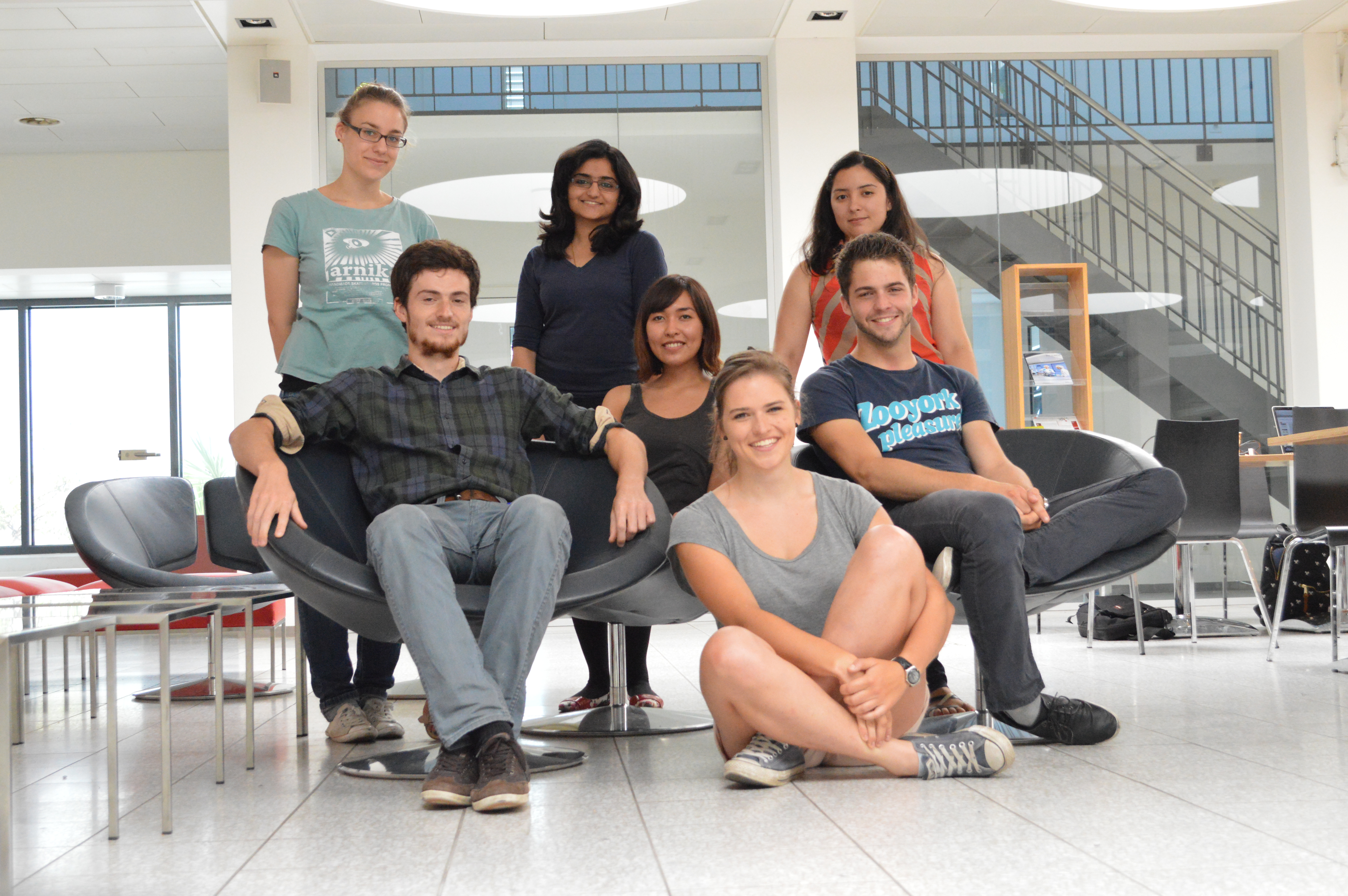Team:ETH Zurich
From 2013.igem.org
| Line 18: | Line 18: | ||
<li> | <li> | ||
| - | <img src="https://static.igem.org/mediawiki/2013/6/6b/Slideshowthing.png" usemap="# | + | <img src="https://static.igem.org/mediawiki/2013/6/6b/Slideshowthing.png" usemap="#map1" id="imagemap" /> |
| - | <map | + | <map name="map1" id="map1"><area shape="poly" alt="" title="" coords="291,95,125,97,126,120,291,120,291,131,315,108,290,82,290,82" href="https://2013.igem.org/Team:ETH_Zurich/Experiments_2" target="" /><area shape="poly" alt="" title="" coords="577,163,547,171,524,205,525,250,543,288,573,299,607,284,624,250,625,211,611,182,591,164" href="https://2013.igem.org/Team:ETH_Zurich/Project" target="" /><area shape="poly" alt="" title="" coords="483,331,454,317,404,313,351,335,330,375,355,411,394,431,438,432,481,420,508,391,509,364,501,345,501,345" href="https://2013.igem.org/Team:ETH_Zurich/Experiments_3" target="" /><area shape="rect" alt="" title="" coords="225,261,358,286" href="https://2013.igem.org/Team:ETH_Zurich/Experiments_6" target="" /><area shape="circle" alt="phoa" title="PhoA" coords="116,340,19" href="https://2013.igem.org/Team:ETH_Zurich/Experiments_7" target="" /><area shape="circle" alt="GusA" title="GusA" coords="183,324,21" href="https://2013.igem.org/Team:ETH_Zurich/Experiments_7" target="" /><area shape="circle" alt="LacZ" title="LacZ" coords="158,365,22" href="https://2013.igem.org/Team:ETH_Zurich/Experiments_7" target="" /><area shape="circle" alt="LacZ" title="LacZ" coords="104,398,20" href="https://2013.igem.org/Team:ETH_Zurich/Experiments_7" target="" /><area shape="circle" alt="Aes" title="Aes" coords="189,414,22" href="https://2013.igem.org/Team:ETH_Zurich/Experiments_7" target="" /><!-- Created by Online Image Map Editor (http://www.maschek.hu/imagemap/index) --></map> |
<p style="font-size:15px" align="justify"><b>Information Processing</b><br> Our non-mine colonies are designed to distinguish between different concentrations of OHHL that translate this information into expression of different sets of hydrolases. They are equipped with mutated LuxR promoters with different OHHL sensitivities which serve as highpass filters. The promoters were created using site-saturation mutagenesis. Through mutation of the LuxR binding sites we were able to tune the promoters to different OHHL affinities .</p> | <p style="font-size:15px" align="justify"><b>Information Processing</b><br> Our non-mine colonies are designed to distinguish between different concentrations of OHHL that translate this information into expression of different sets of hydrolases. They are equipped with mutated LuxR promoters with different OHHL sensitivities which serve as highpass filters. The promoters were created using site-saturation mutagenesis. Through mutation of the LuxR binding sites we were able to tune the promoters to different OHHL affinities .</p> | ||
| Line 35: | Line 35: | ||
<li> | <li> | ||
<img src="/wiki/images/a/af/Experimentslide3.png" usemap="#map2" id="imagemap2" style="margin: 0 auto;" /> | <img src="/wiki/images/a/af/Experimentslide3.png" usemap="#map2" id="imagemap2" style="margin: 0 auto;" /> | ||
| - | <map id=" | + | <map id="map2" name="map2"><area shape="rect" alt="" title="PluxRmutations" coords="16,14,421,308" href="https://2013.igem.org/Team:ETH_Zurich/Experiments_5" target="" /><area shape="rect" alt="" title="Diffusion tests" coords="441,18,855,315" href="https://2013.igem.org/Team:ETH_Zurich/Experiments_2" target="" /><area shape="rect" alt="" title="Enzyme substrate tests" coords="23,321,444,725" href="https://2013.igem.org/Team:ETH_Zurich/Experiments_3" target="" /><area shape="rect" alt="" title="Gameplay" coords="459,317,851,724" href="https://2013.igem.org/Team:ETH_Zurich/Experiments_6" target="" /><!-- Created by Online Image Map Editor (http://www.maschek.hu/imagemap/index) --></map> |
<p style="font-size:15px" align="justify"><b>Experiments</b><br>Starting with characterization of the OHHL diffusion in agar plates we went on to test different sender- and receiver-cell pairs in the hexagonal grid. Initially we used Green fluorescent Protein (GFP) as a reporter to study the OHHL interaction between mine and non mine colonies. Together with promoter mutagenesis and screening, we also tested and characterized different hydrolase-substrate pairs which are crucial to get the game going!</p> | <p style="font-size:15px" align="justify"><b>Experiments</b><br>Starting with characterization of the OHHL diffusion in agar plates we went on to test different sender- and receiver-cell pairs in the hexagonal grid. Initially we used Green fluorescent Protein (GFP) as a reporter to study the OHHL interaction between mine and non mine colonies. Together with promoter mutagenesis and screening, we also tested and characterized different hydrolase-substrate pairs which are crucial to get the game going!</p> | ||
| Line 54: | Line 54: | ||
else {slider.goToPrevSlide();} | else {slider.goToPrevSlide();} | ||
}); | }); | ||
| - | $('#imagemap').mapster({ | + | $('#imagemap, #imagemap2').mapster({ |
fillColor: 'c2d8f1', | fillColor: 'c2d8f1', | ||
fillOpacity: 0.6 | fillOpacity: 0.6 | ||
Revision as of 12:49, 18 September 2013
Colisweeper is an interactive, biological version of the Minesweeper computer game, based on luxI/luxR quorum sensing and chromogenic enzymatic reactions. The goal is to clear an agar “minefield” without detonating mines.
Genetically engineered Escherichia coli colonies are used as sender-cells (mines) and receiver-cells (non-mines). Mines secrete the signaling molecule N-(3-oxohexanoyl)-l-homoserine lactone (OHHL) whereas non-mines process the signal. To distinguish between OHHL-levels, a library of PLuxR promoters with various sensitivities was created through site-saturation mutagenesis. High-pass filters were constructed to control the expression of different orthogonal hydrolases in non-mines, depending on the number of surrounding mines.
Additionally, the mines express their own hydrolase.A spatiotemporal reaction-diffusion model was established to evaluate and improve the system. To play Colisweeper, a colorless substrate solution is pipetted onto a colony of choice. The result is a defined color change within minutes, allowing identification of the played colony and the number of mines surrounding it.
 "
"













